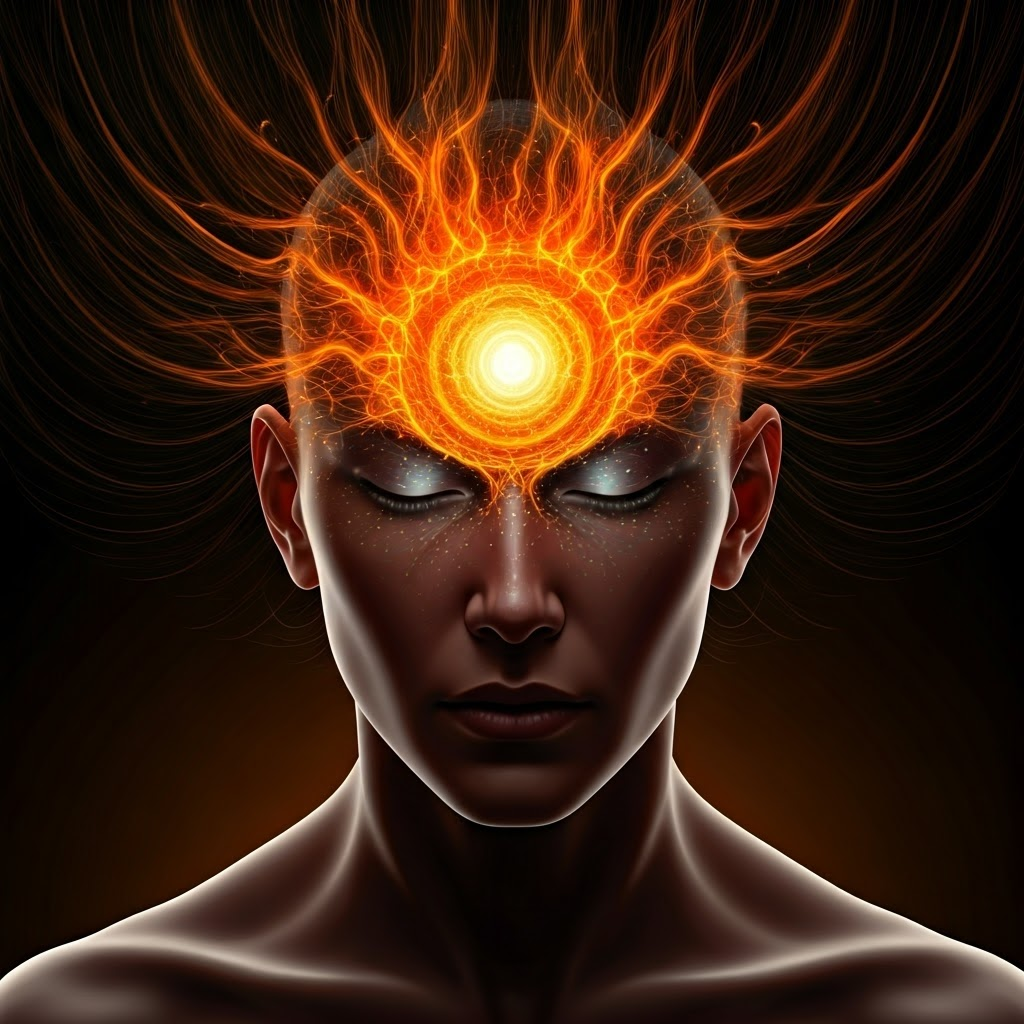Understanding Aura Migraine: Symptoms & Treatment Guide

Key Highlights
- Aura migraine affects about 25%-30% of individuals who experience migraines.
- This type of migraine involves sensory disturbances known as auras that precede or accompany the headache.
- Visual disturbances, such as flashing lights or blind spots, are the most common aura symptoms.
- While the exact cause remains unclear, aura is thought to be linked to electrical or chemical waves in the brain.
- Treatment options encompass lifestyle modifications, medications, and, in certain cases, preventative therapies.
Introduction
Migraine aura can affect daily life. It can lower the quality of life for many people. This blog post will explain migraine aura. We will talk about its symptoms, causes, treatment options, and ways to manage it. By understanding this condition, we help individuals find the right care and take steps to boost their well-being.
What is Aura Migraine?

Migraine with aura is also called classic migraine. It is a neurological condition that features a set of sensory changes known as auras. These auras happen before or during the often painful headache part of a migraine attack. Not everyone who has migraines experiences auras. However, they are an important sign of a type of migraine that needs special care and treatment.
Auras usually show up as visual disturbances, but they might also affect other senses like touch, speech, and movement. It is important to recognize the signs and symptoms of aura migraine. This helps with early action and better management of this complicated neurological condition.
Defining Aura Migraine and Its Uniqueness

Aura migraine is different from other types of migraine. It includes neurological signs that show a migraine attack is about to happen. Visual aura is the most common type. People may see flashing lights, zigzag lines, or have blind spots. These visual symptoms usually grow gradually and can last from a few minutes up to an hour.
Aura migraine also has unique signs beyond just vision. Some people might feel tingling or numbness in their arms or face, known as sensory aura. In rarer cases, individuals can have trouble speaking or understanding language, which is called dysphasic aura.
Knowing how aura can show up is crucial for getting the right diagnosis and care. The special nature of aura migraine highlights that it’s important to talk to a doctor for customized treatment plans.
The Mechanism Behind Aura Migraine: A Closer Look

The exact cause of aura migraine is still being studied. But many researchers think it may be related to something called cortical spreading depression. This means a wave of electrical activity travels across the surface of the brain. This wave changes how the neurons work along its path.
When this wave moves through the visual cortex, it affects how we see things. The visual cortex helps us understand visual information. This can lead to the visual disturbances typical of aura. As the wave continues, it can affect other parts of the brain. This is why people experience different aura symptoms.
We need to study this complicated brain activity more. This will help us understand aura migraines better. It may also help create better treatments in the future.
Identifying Aura Migraine Symptoms

Recognizing the signs of an aura migraine is very important. It can help people get medical help early and may lessen how bad a migraine attack will be. The feeling of an aura can be different for each person. Knowing the common signs can be very helpful for getting care on time.
Aura symptoms usually come before the headache phase. They act as a warning for many people. It’s key to learn how to tell aura symptoms apart from other issues like a transient ischemic attack (TIA). This ensures that people get the right medical care and can check for serious underlying problems.
Common Symptoms of Aura Migraine
Aura symptoms usually start slowly. They often reach their highest point in 5 to 20 minutes and can last for about 20 to 60 minutes. Everyone may experience them a bit differently, but common aura symptoms can include:
- Visual disturbances:
- Seeing bright lights, flashes, or shimmering lines
- Having blind spots or part of your vision missing
- Distorted sight where things look smaller or larger
- Blurred vision or trouble focusing
- Sensory disturbances:
- Tingling or numbness that often begins in one hand and moves up the arm or to the face
- Weakness or lack of feeling on one side of the body
- Trouble talking or finding the right words
- Confusion or feeling lost
These aura symptoms are temporary and usually go away completely. They do not cause lasting harm. However, having these symptoms can feel worrying. It’s important to get medical help for a good diagnosis and care.
Differentiating Between Aura and Non-Aura Migraine Symptoms
While both types of migraines cause intense headaches, you can tell them apart by the presence of specific signs before or during the headache. With aura migraines, there are neurological issues, usually affecting the field of vision, that act as a warning sign before the migraine attack begins.
On the other hand, non-aura migraines do not have these warning signs. People might experience common symptoms like nausea, vomiting, and sensitivity to light and sound, but they don’t get the neurological signs that come with aura migraines.
Knowing these important differences helps healthcare professionals give the right diagnosis and create suitable treatment plans based on the type of migraine.
Causes and Triggers of Aura Migraines
The exact causes of aura migraines are not completely clear. But studies show that a mix of genes and things in the environment is important in triggering these migraines. Knowing what leads to these migraines is important to help manage them and maybe even stop them from happening.
By paying attention to their triggers and making smart lifestyle choices, people can take control of their condition. This can help improve their quality of life and manage aura migraines better.
Understanding the Root Causes of Aura Migraine
The exact cause of aura migraine is not clear, but there is strong evidence that suggests a mix of genetic and environmental factors. People with a family history of migraine headaches may have a higher chance of getting these types of migraines, including aura.
Hormonal changes are also important. Women commonly face triggers related to these changes. Shifts in estrogen levels during menstruation, pregnancy, and menopause can raise the chances of having an aura migraine.
Additionally, some lifestyle aspects like stress, not getting enough sleep, dehydration, and certain foods can also lead to aura migraines. Finding and managing these risk factors can help reduce how often and how severe the attacks are.
Recognizing Common Triggers to Avoid
Identifying what causes your migraines is very important for managing aura migraines well. Each person’s triggers can be different. However, here are some common ones:
- Food: Some foods and drinks can trigger migraines. Aged cheeses, processed meats, and alcohol (especially red wine) are common culprits. Foods that have tyramine or MSG can also be a problem. Skipping meals or having changes in blood sugar levels may cause attacks too.
- Environment: Bright lights, especially flickering or fluorescent ones, can trigger migraines. Strong smells, loud sounds, and extreme temperatures can also be triggers.
- Lifestyle: Factors like stress, not getting enough sleep, changing your sleep patterns, being dehydrated, smoking, or doing tough exercises can lead to aura migraines too.
Keeping a headache diary is a good way to track what might trigger your migraines. Write down any food cravings or activities that happen before an attack. This can help you see patterns and make changes to lower your chances of getting migraines.
Diagnosis and Tests for Aura Migraine
Diagnosing an aura migraine mostly depends on a detailed look at your medical history and a complete neurological check-up. Doctors might suggest more tests to rule out other possible issues. These tests can help clarify things and assist healthcare workers in giving the right diagnosis and creating a personal treatment plan.
Key Diagnostic Criteria for Aura Migraine
Diagnosing aura migraine starts with a good talk about your medical history. A physical exam is done to check how your nerves are working. Doctors also look to rule out other issues that might cause the aura.
Since aura symptoms can look like other health problems, doctors take extra care to tell aura migraine apart from conditions like a transient ischemic attack, or TIA, which is sometimes called a mini-stroke.
To diagnose aura migraine, healthcare providers often look at:
- History and Symptoms: They check how often the migraine happens, how long it lasts, and the details about the aura symptoms.
- Neurological Examination: They check reflexes, coordination, balance, and senses to see if there are any nerve issues.
- Imaging Tests: Sometimes, tests like CT scans or MRIs are used to rule out other causes of symptoms, such as brain tumors or aneurysms.
Tests and Evaluations Specific to Aura Migraines
While diagnosing aura migraine primarily relies on a detailed medical history and physical examination, certain tests and evaluations can help confirm the diagnosis and rule out other potential conditions mimicking migraine symptoms.
- Neurological Examination: Assessing reflexes, coordination, and sensory perception can help identify any underlying neurological issues.
- Imaging Tests: In certain situations, a CT scan or MRI might be ordered to rule out other neurological causes, such as a stroke or brain tumor.
- Eye Exam: If visual disturbances are prominent, a comprehensive eye exam can help evaluate the health of the eyes and rule out any underlying ocular conditions contributing to the symptoms.
Evaluating the frequency, duration, and severity of migraine episodes, along with the presence and nature of aura symptoms, plays a crucial role in diagnosis.
| Test | Purpose |
| Neurological Examination | Assess for neurological deficits and rule out other disorders |
| CT Scan or MRI | Rule out structural abnormalities or other neurological conditions |
| Eye Exam | Evaluate eye health and visual function |
Effective Treatments and Management Strategies
Managing aura migraines requires a mix of lifestyle changes, medications, and prevention methods. These approaches should fit personal needs and triggers.
The main goals of treatment are to ease symptoms, lessen how often migraines occur, and reduce their severity. By taking an active role in their care and working closely with healthcare providers, people can work to lessen how aura migraines affect their quality of life.
Medications and Therapies for Aura Migraine Relief
Migraine treatment aims to reduce symptoms during an attack and to stop future migraines. Pain relief is very important during an aura migraine. Over-the-counter pain relievers, like ibuprofen or naproxen, are often the first choice. If these do not work, stronger prescription pain medications or drugs for migraines, like triptans, might be given.
For people with frequent or severe migraines, taking prophylactic medications regularly can help lower how often attacks happen, as well as their strength and length. These can be beta-blockers, antidepressants, or anti-seizure medications. Your doctor will help find the best choice for you based on your needs and health history.
Besides medicine, some people feel better using alternative therapies. These can include acupuncture, biofeedback, massage, or cognitive behavioral therapy. These therapies can help manage stress, which is known to trigger migraines.
Lifestyle Adjustments and Preventative Measures
Along with medical treatments, making some lifestyle changes can really help manage aura migraine. Keeping a headache diary is a good way to find out what triggers your migraines. This diary can show you specific foods, activities, or things in your environment that might be causing your headaches.
Changing your lifestyle, like keeping a regular sleep schedule, reducing stress with yoga or meditation, and drinking enough water can help lessen how often and how bad your migraines are.
Also, teaming up with a healthcare professional can help you find and control any dietary triggers. For example, you might need to stop eating aged cheese or processed meats to have better control over your aura migraine.
Understanding aura migraines is very important for managing them well. Knowing the special signs and triggers can help with diagnosis and treatment. Changes in your lifestyle, along with medications and therapies, are key in handling aura migraines. By staying away from common triggers and following preventive tips, you can lessen how often and how intense these migraines are. If you think you have aura migraines, talk to a healthcare provider for a correct diagnosis and personalized treatment options. Stay aware and active in dealing with aura migraines to enhance your quality of life and well-being.
Key Takeaways on Understanding and Managing Aura Migraine
Aura migraine is a type of headache that comes with special symptoms, often in the way of seeing things. These symptoms happen before or with the headache. It’s important to spot these signs early and get medical help for proper diagnosis and treatment.
We do not fully know what causes aura migraine. However, genetics, hormones, and outside factors can contribute to it. Keeping a headache diary and finding out what things trigger your migraines can help you take charge of your health. Making lifestyle changes can also help lessen how much aura migraine affects your daily life.
Other Conditions that May Cause an Aura
While auras are mostly linked to migraines, we should note that other problems can also cause similar sensory issues. For example, epilepsy can show auras, which might include strange smells, tastes, or sensations of déjà vu.
Transient ischemic attacks (TIAs), or mini-strokes, can create short-term neurological symptoms that could be confused with auras. It is very important to tell these conditions apart. TIAs need fast medical care. If you suddenly have neurological symptoms, especially weakness, numbness, or vision loss, you should see a healthcare professional right away.
https://order.store.mayoclinic.com/flex/mmv/incon01
https://www.youtube.com/user/NLMNIH
https://www.instagram.com/nihgov
https://www.statpearls.com/articlelibrary/commentarticle/25145

